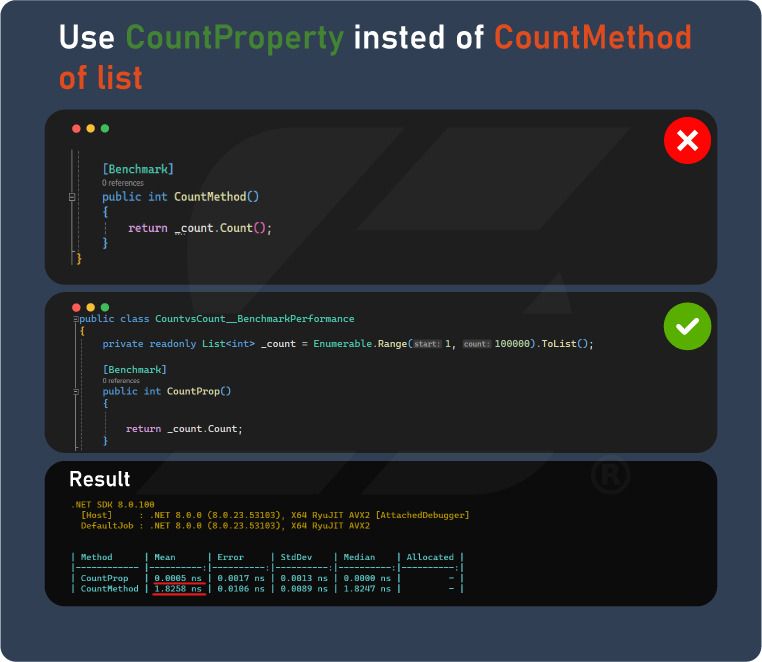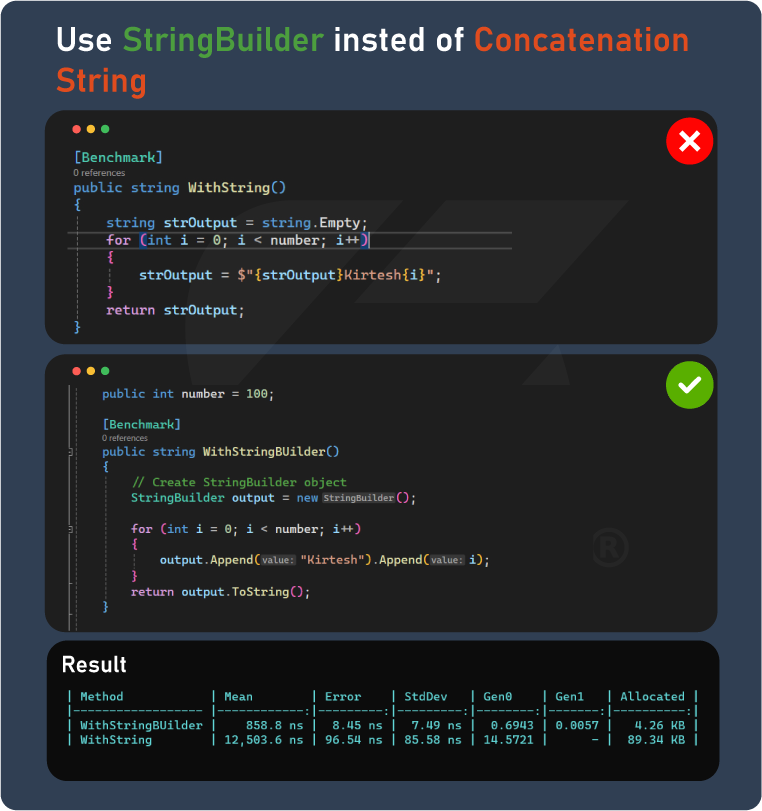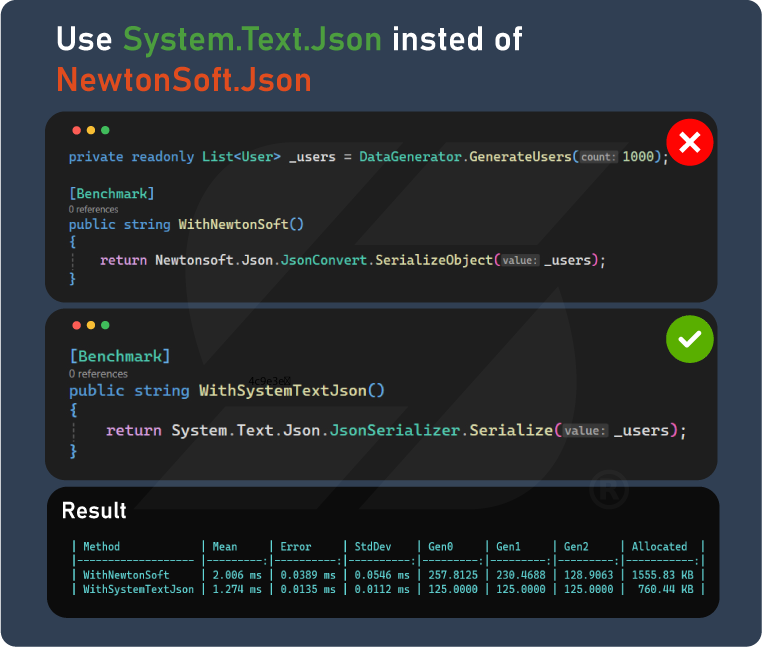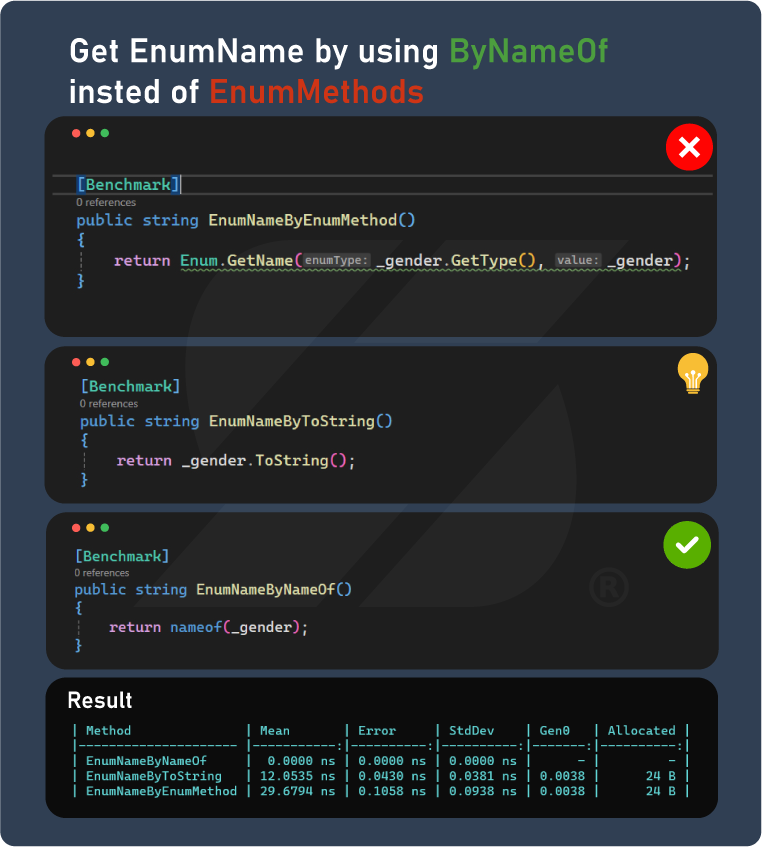An Overview of .NET Benchmarking Comparison
Last updated 1 Year ago | 5 Min Read | 141 views
In the world of software development, one of the key goals is to make our code run faster and more efficiently. This process involves understanding how different parts of our code perform and finding ways to optimize them. One of the tools we use for this is called benchmarking. Let's delve into the fascinating world of performance optimization in .NET, guided by data-driven benchmarking comparisons.
Understanding Benchmarking
Benchmarking in .NET involves the systematic process of evaluating the performance of code snippets or algorithms under controlled conditions. By measuring metrics such as execution time, memory usage, and CPU utilization, developers gain insights into the efficiency of their code and can identify areas for improvement. Benchmarking is not only about comparing different implementations but also about understanding the underlying performance characteristics of the .NET framework and its components.
Why Benchmark .NET?
At its core, benchmarking in .NET development serves three fundamental purposes:
- Performance Optimization: Benchmarking aids developers in identifying performance bottlenecks within their codebase, enabling them to optimize critical sections for improved efficiency and speed.
- Framework Selection: With an array of .NET frameworks available, benchmarking provides developers with practical data to make informed decisions regarding framework selection based on performance requirements and constraints.
- Resource Allocation: Efficient resource allocation is paramount in ensuring optimal application performance. By benchmarking .NET code, developers can accurately gauge resource utilization and fine-tune hardware allocation for maximum efficiency.
A Glimpse into Benchmarking Comparisons
Let's take a closer look at some of the benchmarking comparisons that have informed our optimization efforts:
- List Count Property vs. Count Method:
The Count property provides direct access to the count of elements in a list, while the Count() method calculates the count dynamically. Benchmarking these two approaches reveals insights into the overhead of method invocation versus property access.
In most cases, accessing the Count property is faster due to its lower overhead.
- StringBuilder vs. String:
StringBuilder is optimized for string manipulation, while string concatenation using the + operator or string.Concat creates new string objects for each concatenation operation. Benchmarking these approaches reveals the efficiency of string manipulation techniques in .NET.
For frequent string manipulations, StringBuilder is more efficient as it avoids unnecessary memory allocations.
- System.Text.Json vs. Newtonsoft.Json:
Benchmarking the JSON serialization and deserialization performance of System.Text.Json and Newtonsoft.Json helps developers choose the optimal solution for their JSON processing needs.
System.Text.Json offers better performance and is ideal for scenarios requiring high throughput and low latency.
- Enum Value Retrieval Methods:
ByNameOf(), ByToString(), and ByEnumMethod() provide different methods of retrieving enum values. Benchmarking these methods offers insights into enum manipulation overhead. The optimal method depends on the specific requirements of the application.
ByEnumMethod() (or direct casting) is faster but less flexible, while ByNameOf() and ByToString() offer more versatility at the cost of slightly higher overhead.
- EndsWith(Char) vs. EndsWith(String):
Benchmarking the EndsWith(Char) and EndsWith(String) methods reveals performance discrepancies based on string comparison options such as culture and case sensitivity.
EndsWithChar() is faster and more efficient than EndsWithString() when comparing characters. It does a great job of checking if the end of a string matches a specific character. vs. EndsWith(String).png)
In conclusion, performance optimization in .NET is a multifaceted endeavor that hinges on the judicious application of benchmarking and data-driven insights. By leveraging empirical evidence to inform our optimization strategies, we strive to unlock the full potential of our applications, delivering unparalleled speed, efficiency, and responsiveness to end-users. As we continue our journey of exploration and innovation, we remain steadfast in our commitment to pushing the boundaries of what's possible in the realm of software performance.
